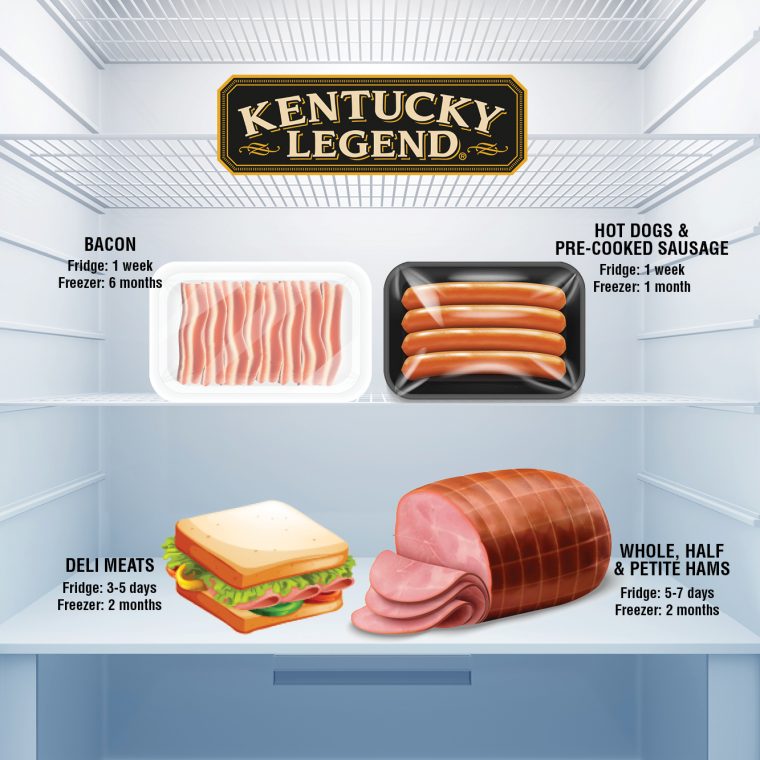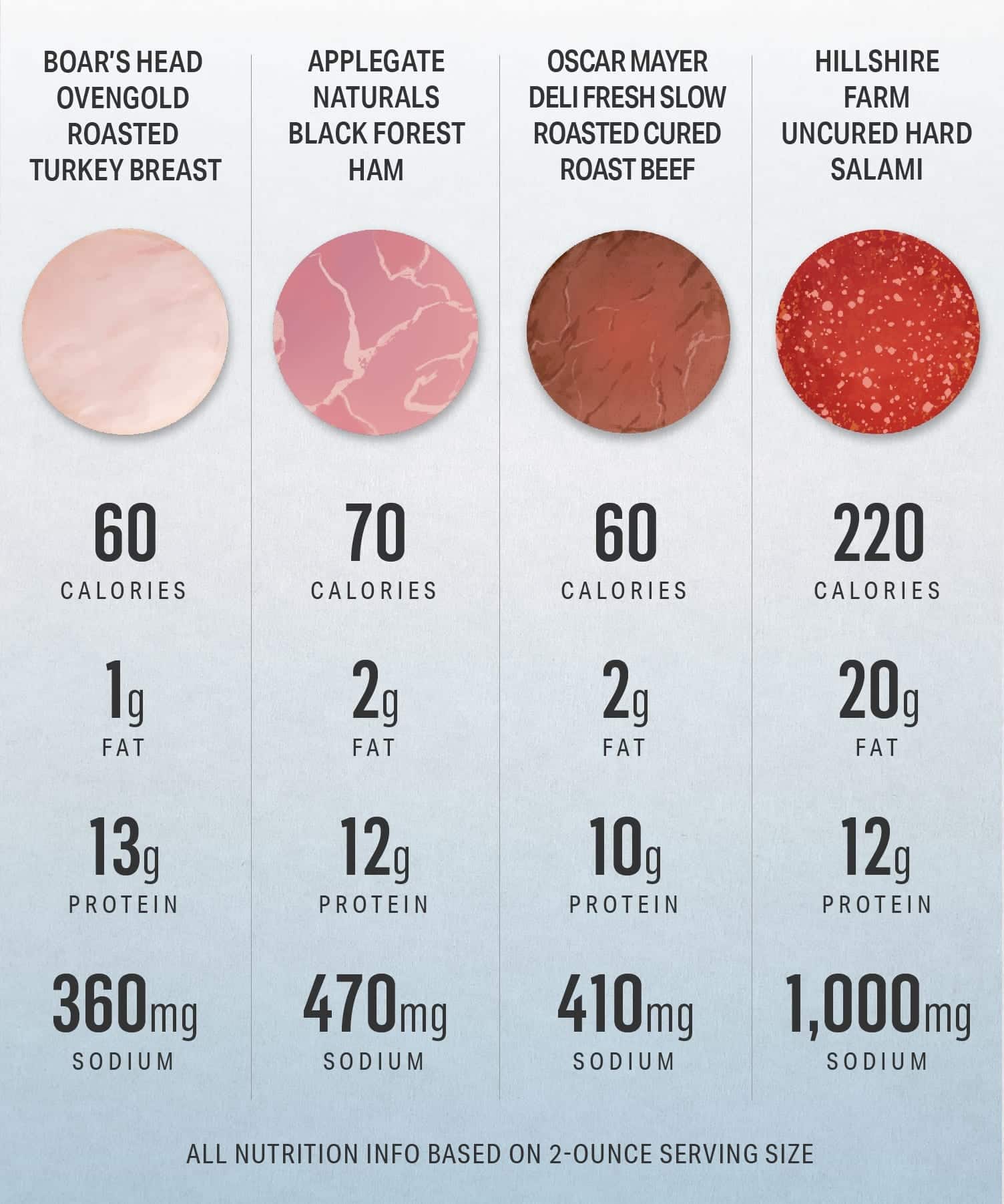How Long is Lunch Meat Good for? Freshness Insights

Lunch meat is typically good for up to 3-5 days after opening. Lunch meat, also known as deli meat or cold cuts, is a popular choice for sandwiches and wraps.
But how long can you safely keep it in your refrigerator? After opening, lunch meat is generally good for about 3-5 days. However, it’s important to check the expiration date on the packaging as some lunch meats may have a shorter shelf life.
It’s also crucial to store it properly in the refrigerator at or below 40°F (4°C) to prevent bacterial growth. In this blog post, we will explore the factors that affect the shelf life of lunch meat and provide tips on how to ensure its freshness and safety. So let’s dive in and learn more about how long lunch meat is good for.

Credit: www.unipatch.com
Introduction To Lunch Meat Shelf Life
Discovering the lunch meat shelf life is vital for freshness. Typically, lunch meat is good for 3-5 days when stored properly. Keep it refrigerated to ensure safety and taste.
Lunch meat is a popular food item that can be found in almost every home. It is a convenient and tasty option for sandwiches, salads, and other recipes. However, it is important to know how long is lunch meat good for to avoid foodborne illness. In this article, we will discuss the initial quality factors, general shelf life expectations, and proper storage techniques to ensure the safety and quality of your lunch meat.
Initial Quality Factors
The shelf life of lunch meat can be affected by several factors, including the initial quality of the product. Here are some factors that can impact the initial quality of lunch meat:
- Processing methods: The way the meat is processed can affect its shelf life. For example, meat that is cured or smoked will last longer than raw meat.
- Expiration date: Always check the expiration date before purchasing lunch meat. Choose products with later expiration dates to ensure a longer shelf life.
- Storage temperature: Lunch meat should be stored at a temperature of 40°F or below to maintain its quality.
General Shelf Life Expectations
The shelf life of lunch meat can vary depending on the type of meat, storage conditions, and other factors. Here are some general expectations for the shelf life of different types of lunch meat:
| Type of Lunch Meat | Refrigerator Shelf Life | Freezer Shelf Life |
|---|---|---|
| Unopened packaged lunch meat | 2 weeks | 1-2 months |
| Opened packaged lunch meat | 3-5 days | 1-2 months |
| Deli-sliced lunch meat | 3-5 days | 1-2 months |
Proper Storage Techniques
To ensure the safety and quality of your lunch meat, it is important to store it properly. Here are some tips for storing lunch meat:
- Keep lunch meat refrigerated at a temperature of 40°F or below.
- Store lunch meat in an airtight container or resealable bag to prevent contamination.
- Use lunch meat within the recommended shelf life to avoid spoilage.
- Do not leave lunch meat at room temperature for more than 2 hours.
- Freeze lunch meat if you will not be using it within the recommended shelf life.
In conclusion, knowing how long lunch meat is good for is crucial for ensuring the safety and quality of your food. By paying attention to the initial quality factors, general shelf life expectations, and proper storage techniques, you can enjoy your lunch meat with peace of mind.
Types Of Lunch Meat And Their Lifespans
Discover the varying lifespans of different lunch meats to ensure freshness. From turkey to ham, deli meats generally last 3-5 days when stored properly in the fridge. Keep an eye on expiration dates for optimal taste and quality.
Prepackaged Vs. Deli-sliced
- Prepackaged lunch meat lasts 2-3 weeks.
- Deli-sliced meat should be consumed within 3-5 days.
Varieties Of Meat And Their Durability
| Meat Type | Lifespan |
|---|---|
| Ham | 3-5 days |
| Turkey | 3-5 days |
| Salami | 2-3 weeks |
Prepackaged lunch meat can last between 2 to 3 weeks while deli-sliced varieties are best consumed within 3 to 5 days.
When it comes to different types of lunch meats, ham and turkey typically last 3 to 5 days, while salami can last up to 2 to 3 weeks.
Storage Practices For Maximum Freshness
To maximize the freshness of lunch meat, it is essential to follow proper storage practices. Ensure that the lunch meat is tightly sealed in an airtight container or wrapped in plastic wrap to prevent air exposure. Store it in the refrigerator at a temperature below 40°F (4°C) and consume it within 3-5 days for optimal taste and quality.
Refrigeration Tips
To maximize the freshness of your lunch meat, proper refrigeration is essential. Always store your lunch meat in the refrigerator at a temperature below 40°F (4°C). This helps slow down the growth of bacteria and keeps your lunch meat safe to consume for a longer period.
When storing your lunch meat in the refrigerator, it is important to keep it well-sealed to prevent it from drying out and absorbing odors from other foods. Transfer the lunch meat from its original packaging to an airtight container or wrap it tightly in plastic wrap or aluminum foil. This will help maintain its moisture and flavor, ensuring it stays fresh and delicious.
Freezing And Its Effects On Quality
If you have more lunch meat than you can consume within a few days, freezing is a great option to extend its shelf life. Freezing helps preserve the quality of the lunch meat, but it is important to follow proper freezing practices to maintain its taste and texture.
When freezing lunch meat, make sure to wrap it tightly in plastic wrap or aluminum foil to prevent freezer burn. Freezer burn can affect the taste and texture of the meat, causing it to become dry and unappetizing. For added protection, you can place the wrapped lunch meat in a resealable freezer bag or airtight container.
It is recommended to label the frozen lunch meat with the date of freezing to ensure you consume it within a reasonable timeframe. While frozen lunch meat can remain safe to eat indefinitely, its quality may start to deteriorate after a few months. To enjoy the best taste and texture, try to consume the frozen lunch meat within 2-3 months of freezing.
To ensure maximum freshness of your lunch meat, follow these storage practices:
- Keep lunch meat refrigerated at a temperature below 40°F (4°C).
- Transfer the lunch meat to an airtight container or wrap it tightly in plastic wrap or aluminum foil.
- Avoid storing lunch meat near strong-smelling foods to prevent it from absorbing unwanted odors.
- If freezing, wrap the lunch meat tightly and label it with the freezing date.
- Consume frozen lunch meat within 2-3 months for the best quality.
Signs Of Spoilage In Lunch Meats
Lunch meats typically stay good for 3-5 days after opening. Signs of spoilage include a sour smell, slimy texture, or discoloration. To ensure freshness, always check the expiration date and store the meat properly in the refrigerator.
Signs of Spoilage in Lunch Meats Lunch meat is a quick and easy protein source for many people. However, it’s important to know when lunch meat has gone bad to avoid getting sick from consuming it. Here are some signs of spoilage to look out for when it comes to lunch meats. Visual cues One of the easiest ways to tell if lunch meat has spoiled is by checking its appearance. If the meat has turned a gray or brown color, has a slimy texture, or has mold growing on it, it’s time to toss it out.
Additionally, if there are any holes or tears in the packaging, it’s best to err on the side of caution and throw it away. Texture and smell indicators Another way to determine if lunch meat is still good is by checking its texture and smell. If the meat feels slimy or sticky to the touch, it’s probably gone bad. The same goes for if it has a sour or funky odor.
Good lunch meat should have a firm texture and a slightly salty smell. To ensure that lunch meat stays fresh for as long as possible, it’s important to store it properly. Keep lunch meat in the refrigerator at 40°F or below and use it within three to five days of opening. If you’re not going to use it within that timeframe, freeze it for later use.
In conclusion, by paying attention to visual cues, texture, and smell indicators, you can ensure that your lunch meat is safe to eat. Remember to store it properly and use it within the recommended timeframe to avoid the risk of foodborne illness.
Health Risks Of Expired Lunch Meat
Lunch meat is a convenient and popular choice for sandwiches and quick meals. However, it’s crucial to be aware of the health risks associated with consuming expired lunch meat. Foodborne illnesses, particularly in vulnerable populations, can pose serious health concerns.
Foodborne Illnesses
Consuming expired lunch meat can lead to foodborne illnesses, including salmonella, listeria, and E. coli. These bacteria can cause symptoms such as nausea, vomiting, diarrhea, and in severe cases, more serious health complications.
Risks For Vulnerable Populations
Vulnerable populations, such as pregnant women, young children, the elderly, and individuals with weakened immune systems, are at a higher risk of experiencing severe consequences from consuming expired lunch meat. These groups are more susceptible to foodborne illnesses and their associated complications.
Understanding Date Labels On Packaging
When it comes to lunch meat, it’s important to know how long it stays fresh and safe to eat. Understanding the date labels on the packaging is key to ensuring you enjoy your lunch meat at its best. In this article, we will explore the difference between sell-by and use-by dates, and how to interpret these labels accurately.
Sell-by Vs. Use-by Dates
Sell-by dates and use-by dates are two common types of date labels you will find on lunch meat packaging. It’s crucial to understand the distinction between them to determine the freshness and safety of the product.
Sell-by dates indicate the date by which the retailer should sell the product. It is not an expiration date but rather a guide for the store to know how long they can display the product for sale. As a consumer, you can still safely consume lunch meat past its sell-by date as long as it has been properly stored and shows no signs of spoilage.
On the other hand, use-by dates are the manufacturer’s recommendation for when the lunch meat is at its best quality. It’s important to consume the product before the use-by date to enjoy its optimal taste and texture. However, if the lunch meat has been stored correctly and shows no signs of spoilage, it may still be safe to eat for a few days after the use-by date.
How To Interpret Date Labels
Understanding how to interpret date labels is essential to make informed decisions about the freshness and safety of your lunch meat. Here are a few tips:
- Check the sell-by or use-by date on the packaging.
- Inspect the lunch meat for any signs of spoilage, such as a foul odor, slimy texture, or unusual discoloration. If any of these are present, it’s best to discard the product.
- Ensure the lunch meat has been stored properly in the refrigerator at or below 40°F (4°C) to maintain its freshness.
- If the lunch meat is nearing its use-by date but appears to be in good condition, you can still consume it. However, it’s always recommended to follow the manufacturer’s guidelines for the best quality.
- If you won’t be able to consume the lunch meat before the use-by date, consider freezing it to extend its shelf life.
By understanding the difference between sell-by and use-by dates and knowing how to interpret date labels, you can confidently enjoy your lunch meat while ensuring its freshness and safety. Remember to always prioritize proper storage and regular inspection to make the most of your deli favorites.
Extending Shelf Life With Proper Handling
Opening Packages
Store unopened lunch meat in the refrigerator.
Cross-contamination Prevention
Keep lunch meat away from raw foods to prevent contamination.

Credit: blog.myfitnesspal.com
Faqs On Lunch Meat Consumption
Wondering how long lunch meat lasts? Generally, lunch meat is good for up to two weeks in the refrigerator if it is properly stored in an airtight container. Be sure to check the expiration date and discard any meat that has gone bad.
Eating Meat Past The Expiration Date
Lunch meat can typically be consumed a few days after the expiration date if stored properly.
Reviving Dry Lunch Meat
To revive dry lunch meat, try adding a bit of moisture by drizzling some olive oil before serving.

Credit: dontwastethecrumbs.com
Frequently Asked Questions
How Long Does Lunch Meat Last In The Fridge?
Lunch meat typically lasts 3-5 days in the fridge when stored properly. It’s important to check the sell-by date and follow storage guidelines to ensure its freshness and safety.
Can You Freeze Lunch Meat For Later Use?
Yes, you can freeze lunch meat for extended storage. Wrap it tightly to prevent freezer burn, and it can last for 1-2 months in the freezer. Thaw it in the refrigerator before consuming.
What Are The Signs That Lunch Meat Has Gone Bad?
Visible signs such as a change in color, slimy texture, or sour smell indicate that lunch meat has spoiled. If you notice any of these, it’s best to discard the meat to avoid potential foodborne illness.
Conclusion
Understanding the shelf life of lunch meat is essential for maintaining food safety. By following proper storage guidelines and being mindful of expiration dates, you can ensure the freshness and quality of your lunch meat. With this knowledge, you can confidently enjoy your sandwiches and salads without any concerns about food spoilage.





